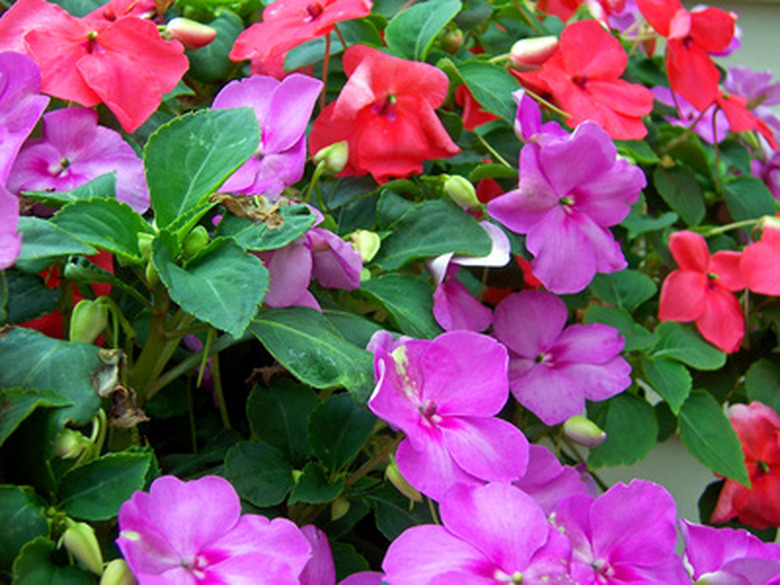What To Do With Impatiens In The Winter?
Impatiens (Impatiens walleriana) are the United State's most popular bedding plant, according to the Iowa State University Extension. With their dark, glossy leaves and bright blooms in a variety of colors, they are ideal not only for beds, but for container gardens and hanging baskets. Most gardeners consider them an annual and simply let them die after the first frost, but it's easy to over-winter impatiens indoors.
Pots
When bringing impatiens indoors, it's important to provide them with well-draining pots. If the pots you've chosen don't have many drainage holes, add some by using an electric drill. It's also smart to add a layer of gravel or pebbles at the bottom of each pot. When potting impatiens, the West Virginia State University Extension Service recommends using soil composed of two parts loam, one part peatmoss or leaf mold, and one part coarse sand.
- Impatiens (Impatiens walleriana) are the United State's most popular bedding plant, according to the Iowa State University Extension.
- Most gardeners consider them an annual and simply let them die after the first frost, but it's easy to over-winter impatiens indoors.
Lighting
Place impatiens in a room that receives plenty of natural light, but keep them away from direct sunlight. Alternatively, you can use a fluorescent shop light—available at home improvement centers—to give impatiens the light they need to survive the winter. Just be sure the light is at least 5 inches above the top of the plants at all times, and keep the light turned on for 12 to 15 hours each day.
Grow lights aren't recommended, according to the Pittsburg Tribune-Review, because they will encourage blooming. Impatiens should rest during the winter.
If the plants become leggy or pale, you know they aren't getting enough light.
Watering
Over-watering is a common mistake when caring for impatiens indoors. Too much water—including water sitting in the saucer beneath the pot–often leads to root rot and fungal diseases. As a general rule, if the soil in the pot is dry a half inch down, it's time to water. Water thoroughly, until liquid begins flowing from the bottom of the pot. Once the pot is done draining, remove all standing water in the saucer.
- Place impatiens in a room that receives plenty of natural light, but keep them away from direct sunlight.
- Alternatively, you can use a fluorescent shop light—available at home improvement centers—to give impatiens the light they need to survive the winter.
Fertilizing
It's best to let impatiens rest during the winter. That means you don't want to encourage blooms, and therefore you don't want to fertilize. However, sometime in early spring, you may use diluted kelp emulsion or some other houseplant fertilizer every three weeks or so until your last threat of frost has passed and you can safely move the impatiens outdoors.
Other Care
To keep impatiens bushy and well maintained, you may pinch back the foliage every few months. Use disinfected scissors, and remove about two inches from each stem.
